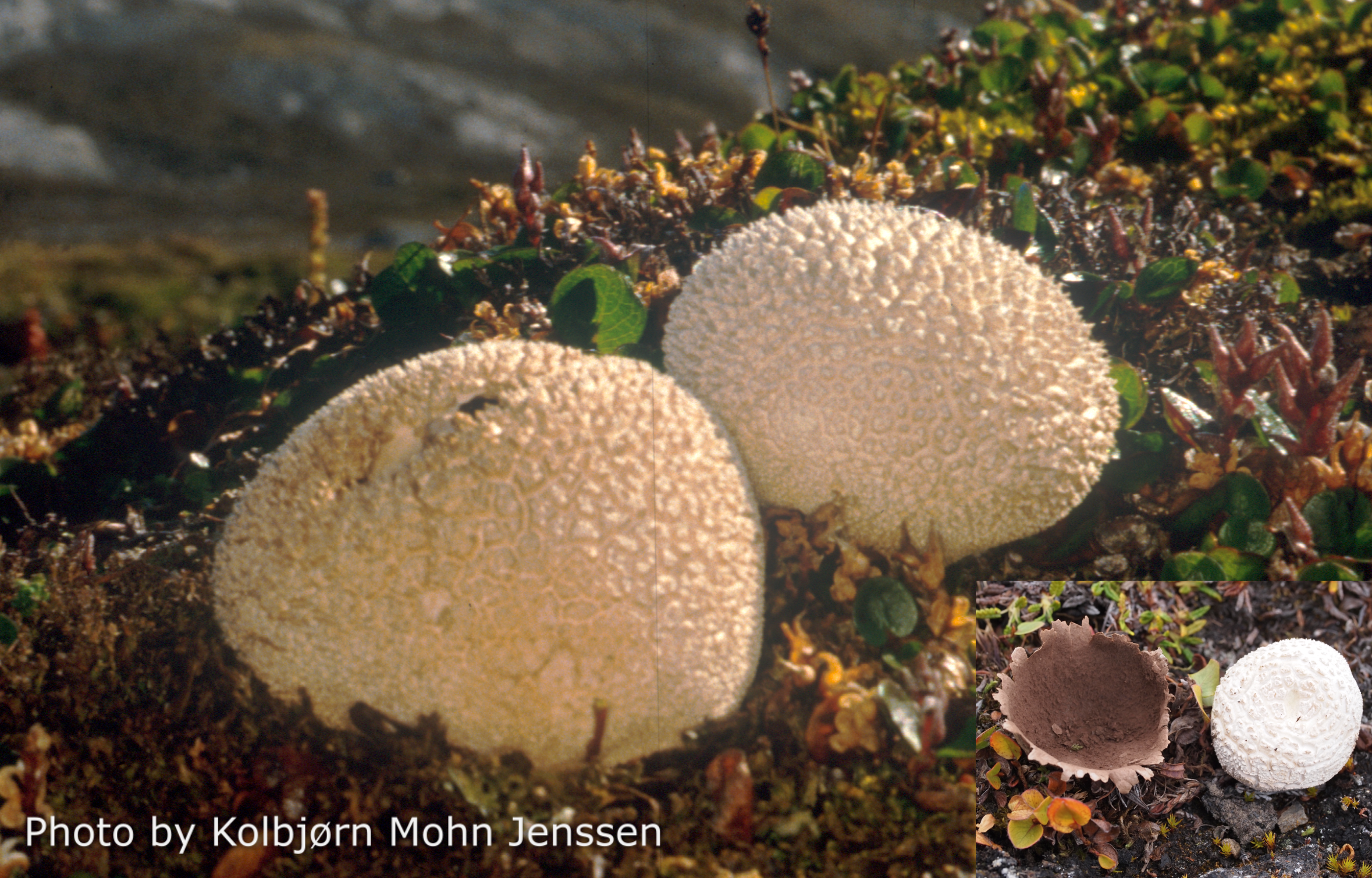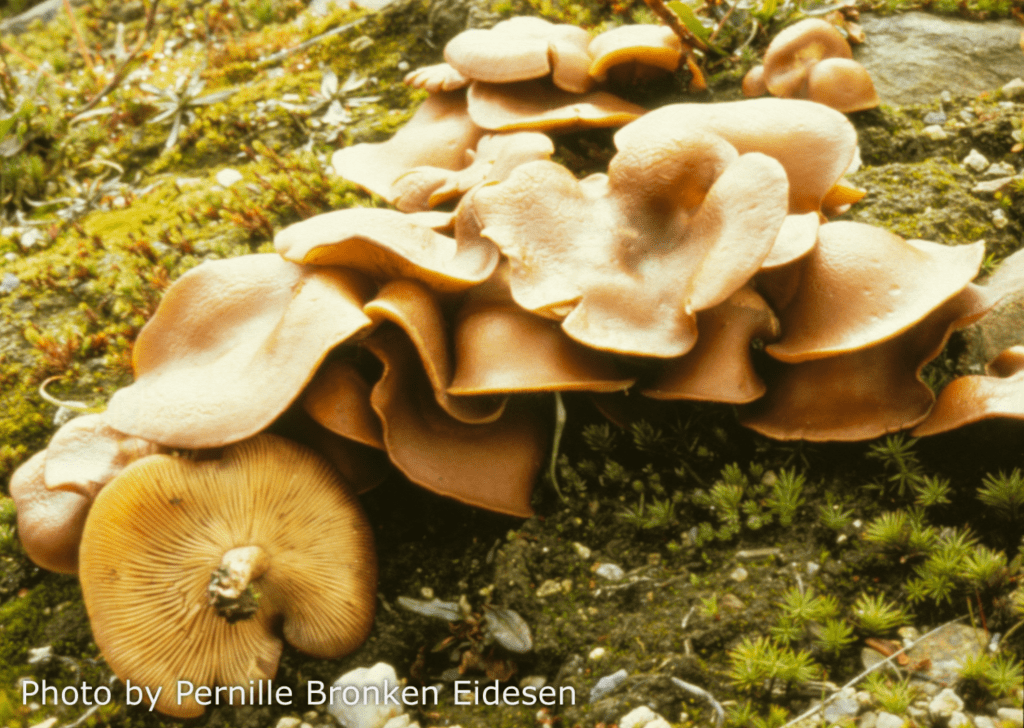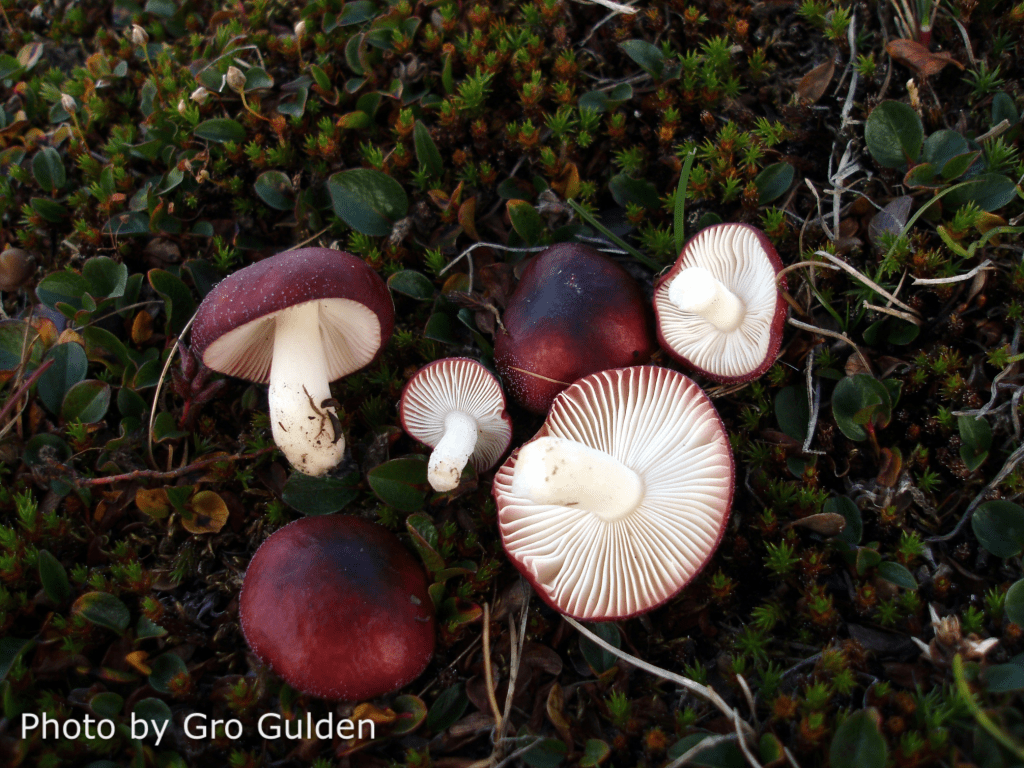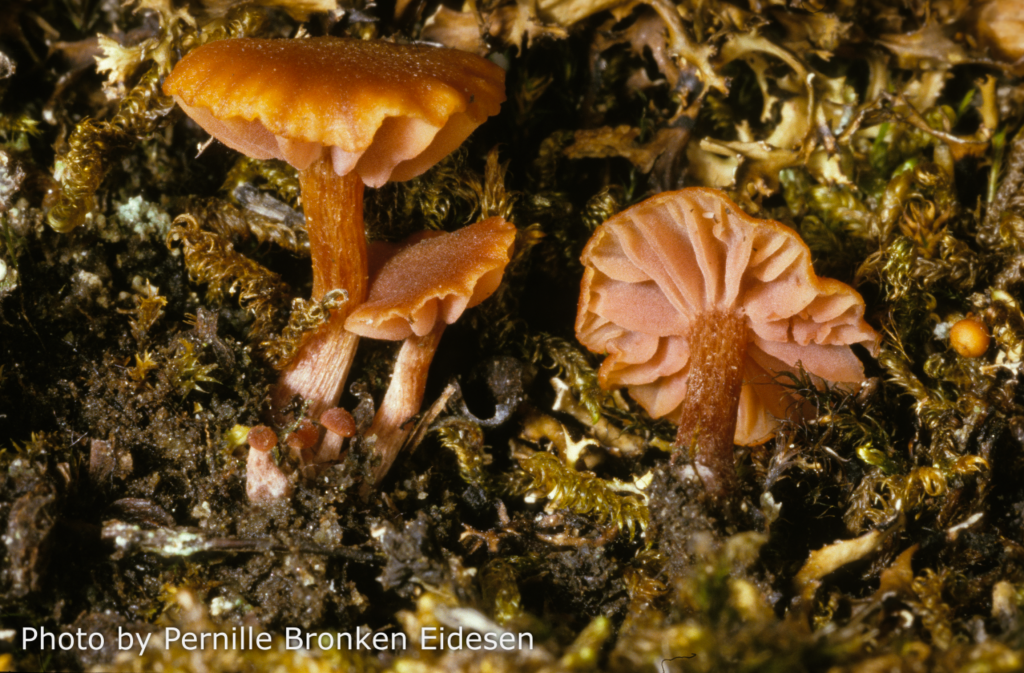A large number of mushroom species grow in Svalbard. Most are small, some are poisonous, while others are edible and tasty. Fungi have most of their biomass under ground, invisible for man, and only produce small fruiting bodies aboveground in autumn, in order to reproduce. Their activity makes nutrients available for plant roots. Vegetation in Svalbard would be scarce without fungi and their ability to mediate nutrition to the plants. Fungi are also an important food item for reindeer and various invertebrates.
The picture in the lower right-hand corner shows a Cassiope tetragona with a fungus-infection (Exobasidium). The fungus is not visible as such, but it changes the appearance of the plant and the usually green leaves change colour to red or greenish-white. Exobasidium is an example of the numerous microfungi that also grow in Svalbard
Cap: 2-5 cm, orange red, becoming cracked when older. Gills: pinkish buff. Stem: 2.5 cm high, 0.3-1 cm thick, similar colour as the cap. Flesh brittle, with white latex, slightly bitter taste. Heath vegetation and mesic tundra. Not edible.
Cup shaped and 1.5-3 cm broad, black surface, inside smooth, outside with greyish white, scaly granules towards the margin. Stem: 1-1.5 cm high, 0.2-0.5 cm thick, cylindrical, smooth, and black. Occurs in sparsely vegetated sites, in calcareous soils.
Small, 1-4 cm, fan shaped, undulating and wavy, thin and almost transparent, with irregular veins underneath, grey. Grows on mosses in moist areas, moss tundra, mires, and along creaks and streams. Probably edible, but small.
Cap: 4-6 cm or larger, yellow brown to red brown, sticky. Gills: young pale whitish or occasionally bluish, becoming rusty brown. Stem: 3-7 cm high, 0.5-1.3 cm thick, white, slimy below a distinct ring. Common in tundra dominated by Salix polaris and Dryas octopetala. Not edible.
Cap: 5-12 cm, convex to slightly depressed in the middle, yellow brown to red brown. Gills: beige to pinkish brown. Stem: 4-10 cm high, 1-2 cm thick, similar colour as the cap. Grows many together, fasciculate, often on disturbed ground, along roads and dikes. Edible and very tasty.
Cap: 3-6 cm, convex, buff. Tubes: white-beige. Stem: 4-6 cm high, 1-1.5 cm thick, pale, covered by small scales. Only found together with Betula nana. Edible.
Brightly egg yellow, resembles a miniature chanterelle. Cap up to 2 cm. Grows among mosses and lichens in both mires and heath vegetation. Forms a lichen together with a green algae, visible here as a thin, green crust around the stem base. Edible, but small.
Ball shaped. White as young, densely covered with a layer of fine matted hairs, 7-17 cm in diameter. The mature fruiting body becomes brown with age, dries and breaks open, and releases the brown powdery spore mass as “smoke” over the tundra. Grows in tundra and pastures. Edible when young and white.
Cap: 10-15 cm, white, densely covered with small, thin scales. Gills: first pink, later brownish black. Stem 1.5-2 cm thick, with ring. Known from a handful of places in and around Longyearbyen, occurs in large fairy rings. Edible and very tasty.
Cap: 3-7 cm, convex, brown with white remnants of the veil. Gills: brown. Stem: 3.5-5 cm high, 0.7-1.2 cm broad, brown, white fibrillous. Grows in tundra dominated by Salix polaris and Dryas octopetala in calcareous soils. Not edible, probably poisonous.
Cap: 1.5-4 cm, dark violet. Gills: white. Stem: 1-3 cm high, 0.3-0.8 cm broad, white. Flesh brittle, sharp taste. Grows together with Salix polaris, Dryas octopetala, and Bistorta vivipara. Not edible.
Cap: 1-2.5 cm, translucently, striate, yellow brown to red brown. Gills: pink. Stem: 1-4 cm high, 0.2-0.5 cm thick, same colour as the cap. Very common in pioneer vegetation. Edible but small.
Exobasidium hypogenum changes the colour of the heather, in which it lives, to red or greenish-white. This is an example of the numerous microfungi that also grow in Svalbard



















